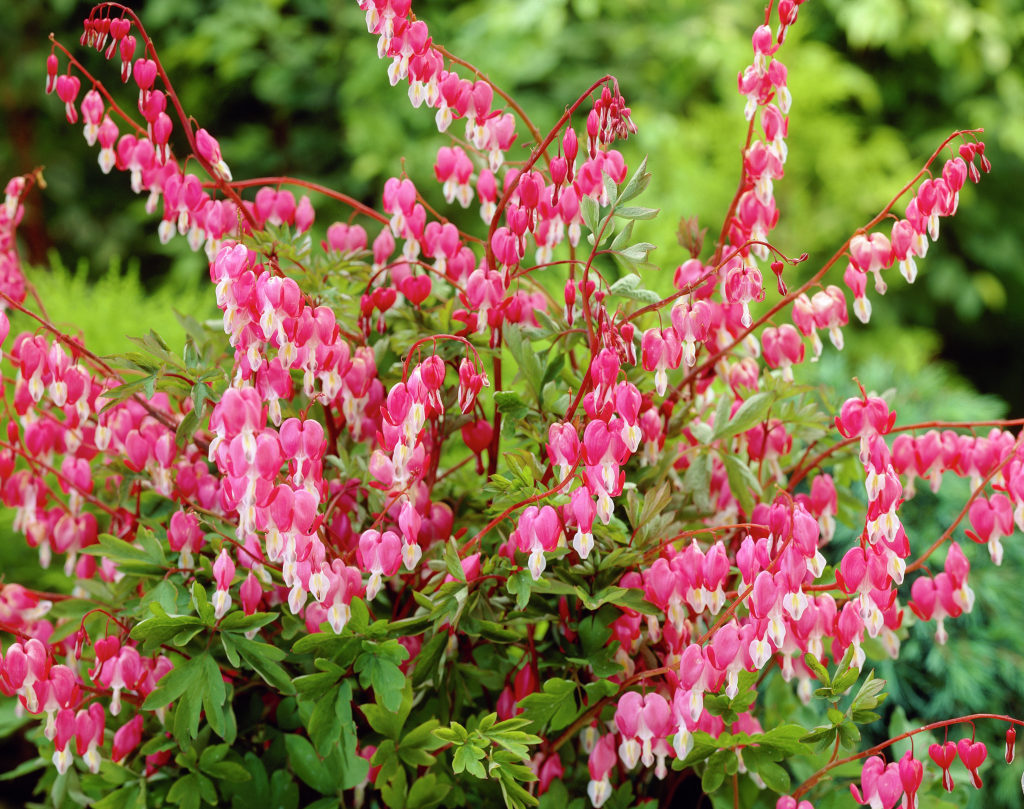Every year, many gardeners grow ornamental perennials to maintain an attractive appearance of their gardens. Moreover, more often than not, they prefer unpretentious plants.
Many experienced flower growers are firsthand familiar with the Brunner, which not only does not create problems in care, but also effectively decorates problem areas in the garden under the shady crowns of trees. The land is especially transformed in spring, when many other ornamental plants are at rest: at this time, the site acquires a special charm thanks to the delicate blue flowers.
Content
Description of the Brunner plant
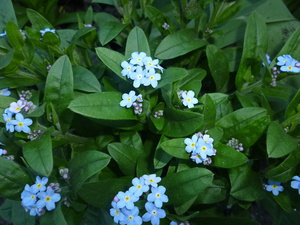 The main representatives of the genus Brunner are herbaceous perennials belonging to the borage family. Its characteristic features are large whole leaves.
The main representatives of the genus Brunner are herbaceous perennials belonging to the borage family. Its characteristic features are large whole leaves.
Many people point out that Brunner strongly resembles forget-me-not, therefore, its old name - "forget-me-not" will be appropriate.
But still Brunner has larger flowersdevoid of characteristic aroma. However, they exhibit an equally amazing hue that allows you to enjoy the blue cloud adorning the decorative, lush greenery.
Inflorescences in adult specimens paniculate or corymbose... At the stage of ripening, a fruit grows, which contains four nuts.
Brunner's bloom begins in early May. But this does not last longer than a month, and then the active formation of leaves begins. In favorable years, when a warm autumn is issued, you can expect the repeated flowering of Brunner.
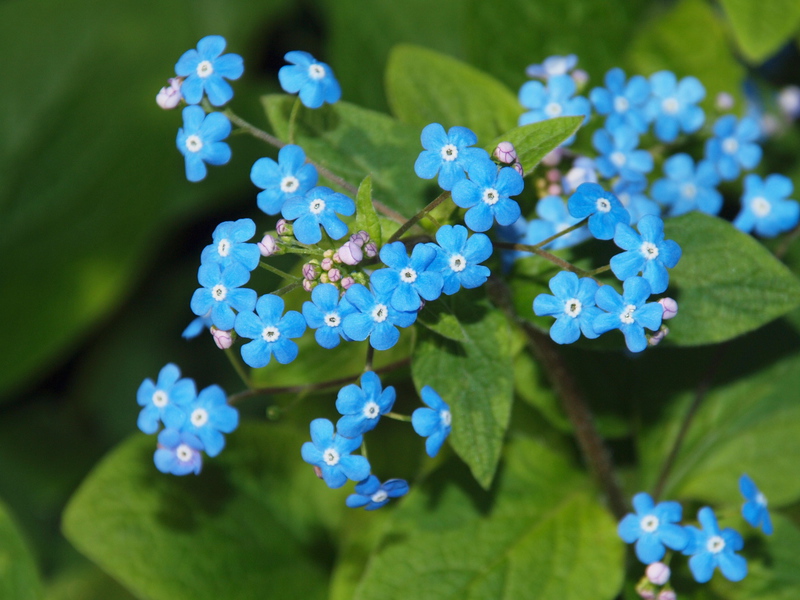
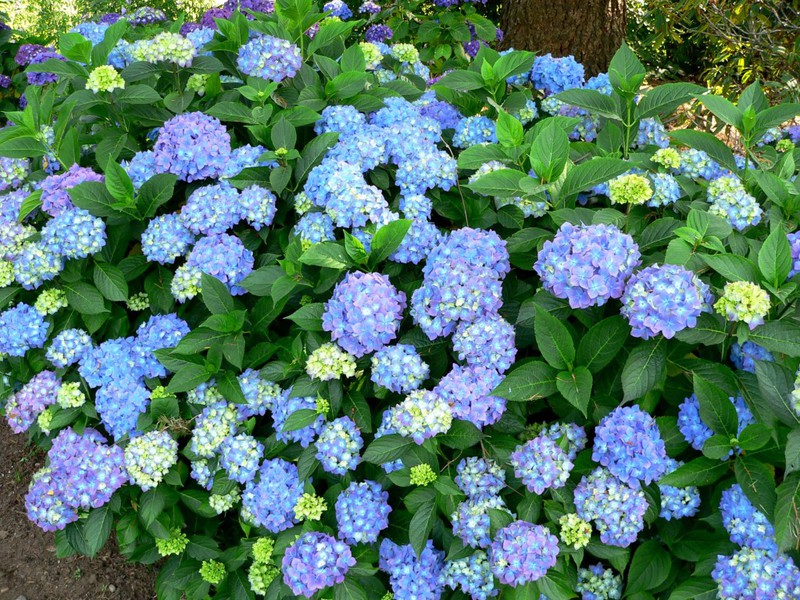
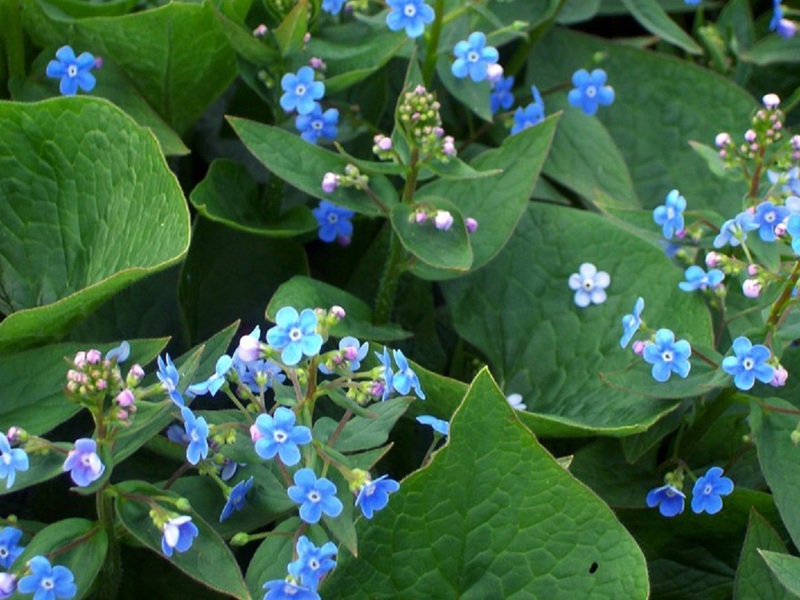
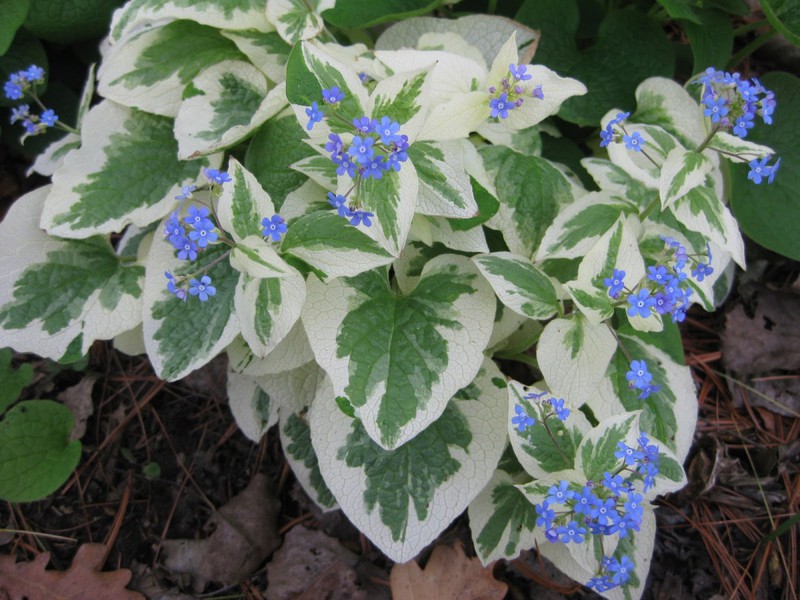
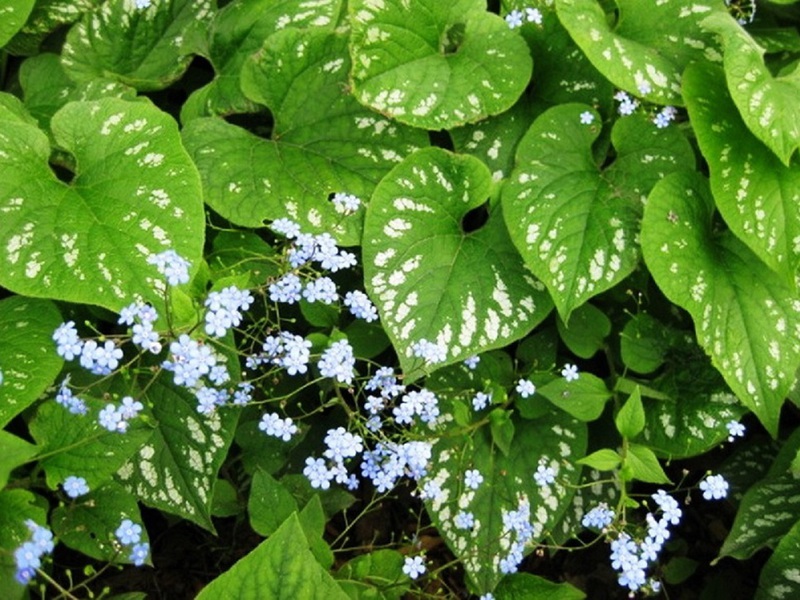
The Brunner genus includes three species, of which only two have received application in landscape design. Brunner large-leaved (lat. B. macrophylla). This plant is found in the wild in the Caucasus. Adult specimens form a branched stem with a powerful superficial root.
By June, when the brunner almost stops blooming, its spreading, leafy stems begin to increase in length, reaching 40 cm. A characteristic feature of the plant is the presence of pubescence, roughness is felt to the touch.
Deciduous mass is formed at the base of the root, has oblong, oval-cordate with a pointed tip shape.
The decorative nature provides the leaves with two colors, since they have dark green color, and below - grayish. Brunner flowers are paniculate-corymbose. The site is decorated from April until the first severe frosts.
During the growing season, the plant retains an elegant appearance, since new leaves are regularly formed. Garden varieties of Brunner look especially attractive, thanks to the wide decorative heart-shaped leaves that have a motley color.
Brunner siberian
 This perennial is common in Altai. It differs not only in its larger size, but also in the most spectacular view... In the process of growth, it forms a long rhizome, single stems, in places there is pubescence. It can reach a height of 60 cm.
This perennial is common in Altai. It differs not only in its larger size, but also in the most spectacular view... In the process of growth, it forms a long rhizome, single stems, in places there is pubescence. It can reach a height of 60 cm.
This plant is not represented as a shrub, but in dense deciduous thickets. With the last withered flowers, the leaves begin to dry out, acquiring a nondescript appearance due to the dark spots formed on their surface.
At the end of summer, the Siberian brunnera forms new leaves, which adorn the thickets of this variety until the first frost. In the wild, this Brunner variety is most often found in shady places with high humidity.
Growing and caring for brunner
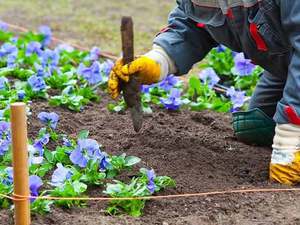 A photo of a plant can charm everyone, but to acquire such beauty, you have to work hard.
A photo of a plant can charm everyone, but to acquire such beauty, you have to work hard.
Before boarding the brunners you need to choose a placetaking into account humidity and shading. Then the plant will subsequently not require much time and effort to care for it.
The most problematic areas in the garden, covered with tree crowns, are perfect for growing brunners.
If the planting is carried out correctly, then in a few weeks they will form dense thickets, suppressing not only weeds, but also closely growing cultivated plants. Therefore, when growing brunners, it is necessary control her thickets.
- It is recommended for the Brunner to take a place that is illuminated by the sun. In conditions of strong shading, the brunner does not look so attractive, it begins to stretch.
- With open access to sunlight, be sure to monitor the humidity of the air and soil. Therefore, a good solution would be to plant it next to a reservoir.
- In summer, when the daytime temperature can often rise to + 30 and above, when grown in sunny areas, the plant often dies. Therefore, it is best to plant it on moist soils.
Features of the care of the Siberian brunner
More whimsical in this regard is the Siberian brunner, which can grow in conditions of moderate humidity. If you grow brunner in areas rich in organic matter, then this provokes long-term foliage growth, which is completely breaks her seasonal rhythm life.
A perennial plant feels uncomfortable if the soil contains too many nutrients. Therefore, in the process of growing it is necessary exclude additional feeding, because otherwise, it can lead to a rapid set of deciduous mass, which does not benefit the plant.
This applies to all fertilizers without exception, and especially fresh manure. In the process of development of Brunner's rhizomes Siberian forms dense plexuses, thereby preventing weeds from growing.
Therefore, it saves the gardener from weeding. All that remains is prunethat have lost their attractive appearance, leaves. Subject to the agricultural technology of planting Brunner Siberian, it greatly simplifies the care of it.
How to care for a large-leaved brunner
A slightly different cultivation approach should be used in relation to the large-leaved brunner.
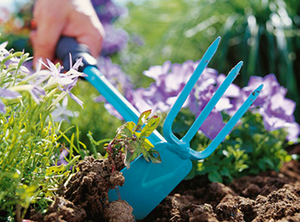 Since it is rather slowly gaining deciduous mass, it becomes impossible for it to effectively fight weeds. Therefore, when growing this variety, timely weeding must be carried out.
Since it is rather slowly gaining deciduous mass, it becomes impossible for it to effectively fight weeds. Therefore, when growing this variety, timely weeding must be carried out.- Due to the fact that the rhizomes are located in the surface layer of the soil, loosening for this plant is contraindicated, at the same time, there is no need for watering and feeding.
- In order not to have problems with weeds in the summer, before planting, it is necessary to carefully prepare the area for the brunner. If it is planned to grow it in open elevated places, then it is imperative to mulch the top layer.
- At the end of summer, secondary flower stalks are formed, which should not be left on the plants, since they cause the plants to lose a lot of vitality, which makes them unprepared for winter.
- When caring for adults, overgrown bushes, it should be borne in mind that their rhizomes can come out and, as a result, the central part of the plant is exposed.This can be avoided if division is carried out regularly.
When creating favorable conditions for a perennial, a transplant may be required for it no earlier than 15 years later.
Brunner's large-leaved is one of those perennials that has a high cold resistance, therefore it tolerates frosts up to - 30 degrees Celsius. With the onset of winter, the leaves die.
Therefore, with little snow winter the plant needs shelter... With the arrival of spring, they can be removed when a stable positive temperature is established. At the same time, they begin to loosen the surface layer of the soil.
Reproduction methods
To obtain new bushes of brunner large-leaved, you can use the method sowing seeds and vegetative, providing for the division of the bush or rhizomes.
The least difficulty arises when using the vegetative reproduction method, for which rhizome segments are used with growth buds. After preparation, the seedlings of large-leaved brunners are placed in the ground at a shallow depth, trying to be located on the surface.
In some cases, it is allowed to propagate by Brunner and sowing seeds, but this can lead to the fact that certain species, primarily variegated, may lose the original characteristics of the mother plant. Therefore, such forms of brunners can be propagated only using the vegetative method.
Reproduction of brunner by dividing the rhizome
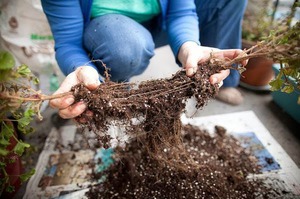 Brunner can be propagated by dividing the rhizome only after the flower buds of the future period have formed, and this happens only at the end of summer.
Brunner can be propagated by dividing the rhizome only after the flower buds of the future period have formed, and this happens only at the end of summer.
Young seedlings take root right up to autumn and, if properly prepared, tolerate winter well. With the onset of spring, when the weather is favorable, they begin to bloom.
For breeding large-leaved brunners most often use bush dividing method, which is due to the structure of its rhizome, which is short and vertical.
These works are planned for the last month of summer:
- having dug a bush, it is necessary to ensure that the earthen lump remains intact, after which it is necessary to remove the above-ground part, and rinse the roots in water;
- further, a clean bush is divided with a sharp knife, the place for cutting is selected taking into account the natural divergence of the roots;
- after preparation, it is recommended to plant the planting material faster in a permanent place, if it stays in the air for a long time, then the root system may dry out;
- in some cases, it is allowed to plant in spring, however, then all summer it is necessary to maintain optimal soil moisture;
- on hot days, young seedlings need to be provided with shade using suitable materials.
Brunner is deservedly considered one of the suitable ornamental plants for growing in the garden.
Many gardeners appreciate it not only because of its decorative qualities, but also unpretentious care... After all, it can be planted in places where all other cultivated plants will not be able to develop normally.
Therefore, with the help of a brunner, you can perfectly fill the areas under the crowns of trees, and here, they can bring additional benefits, since they can effectively fight weeds.

